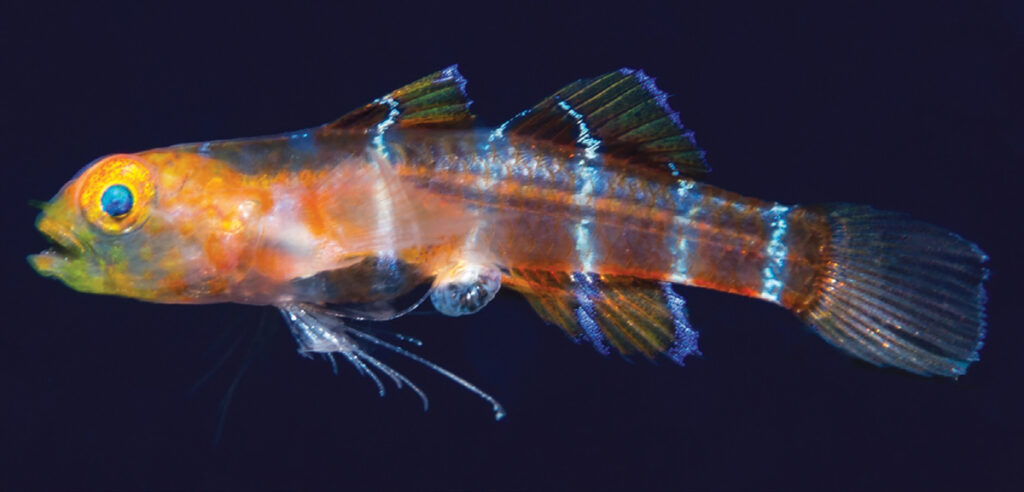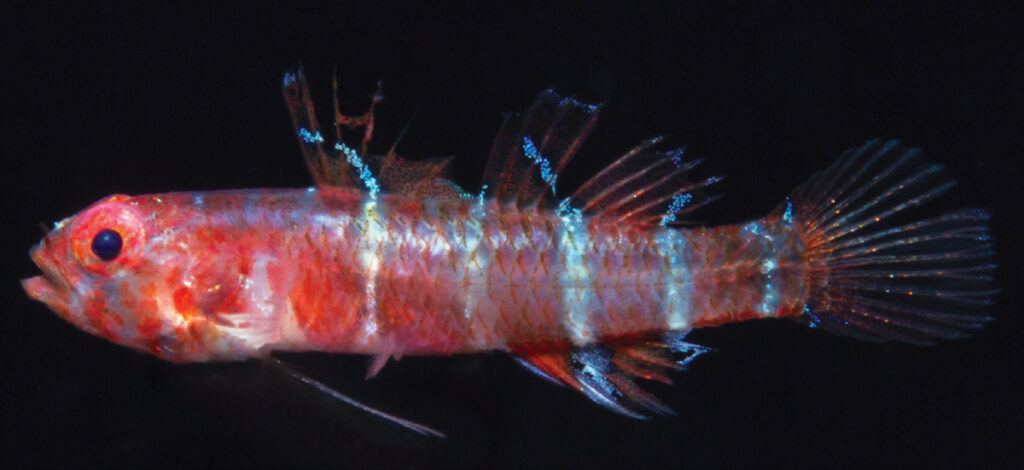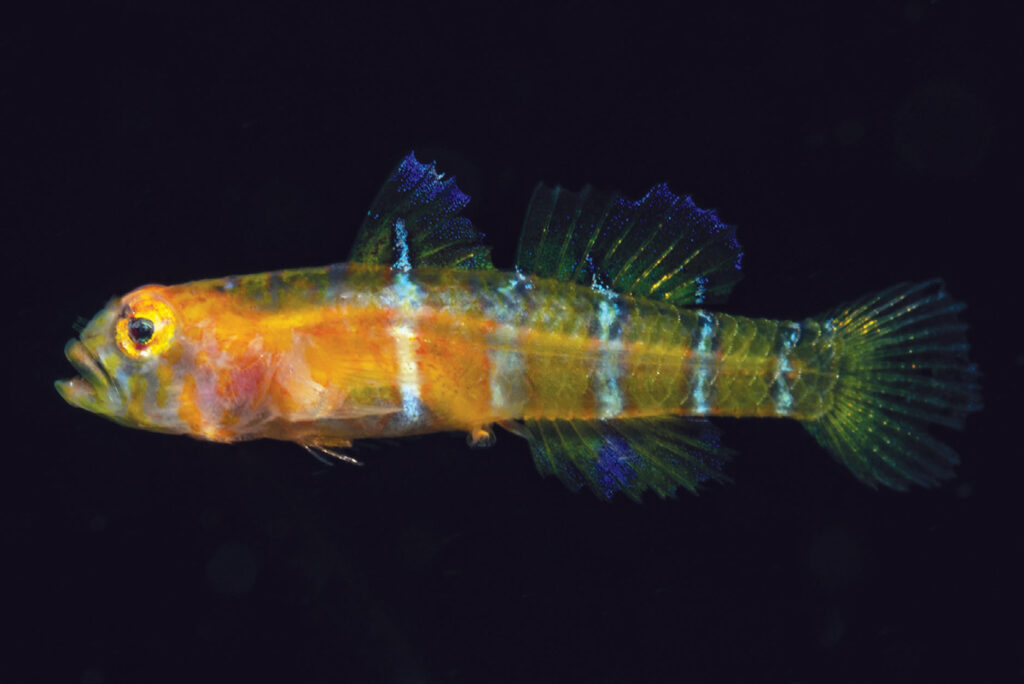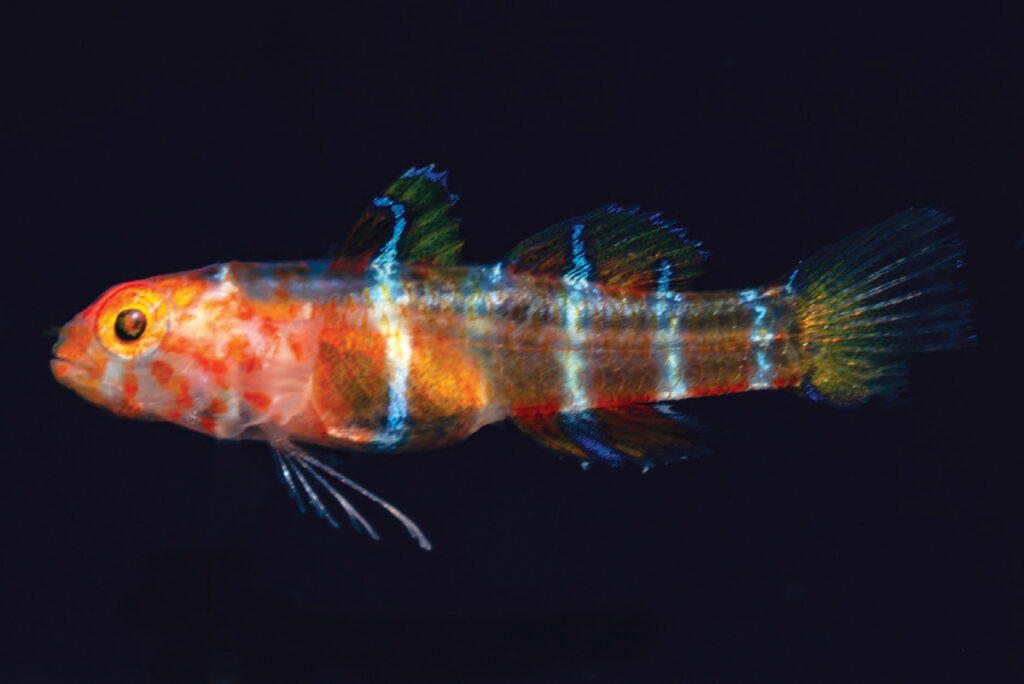
With the new description of Eviota angustifascia, the official tally of newly described Eviota dwarfgobies comes to 123 species , as reported by authors David W. Greenfield and Mark V. Edrmann in the Journal of the Ocean Science Foundation.
The species name of the fish is derived from the five narrow, vertical bands that contrast with a range of different body colors. (“Etymology. The specific epithet is from the Latin angustus, meaning narrow and the Latin fascia meaning band, referring to the narrow, white, vertical lines.”)

This previously undescribed species sports a somewhat variable base coloration, ranging from yellowish-orange to vibrant carmine-red, the authors generalizing the base coloration as “coppery”. The bodies and fins are traversed by five thin, vertical, white bands, and their faces are spotted with the same base coloration as seen on their flanks and unpaired fins, the caudal fin being mainly clear. Dark black spots are found at the anterior base of both the first and second dorsal fin.

The authors note that the species was in scientific collections for a while, initially identified as being similar to Eviota jewettae. The description notes that further collections of specimens by Mark V. Erdmann since 2012 made it possible to properly diagnose and describe the new species.

This is truly a micro-fish. The specimens utilized in the description range from only 9.1 to 11.9 mm, standard length. The type specimen (holotype) was collected in the Lua Island group of Fiji. The species is also known from the island of New Guinea, encountered in both Papua New Guinea and the Indonesian portions of the island, along the northern coast of the landmass. Most specimens were found at depths ranging from 50-65 meters (164 to 213 feet), although one specimen was collected at only 15 meters (49 feet) on Cherie’s Reef, Milne Bay, Papua New Guinea.
The authors describe the habitat of E. angustifascia as “deep crevices on steep outer-reef slopes or walls exposed to current and clear oceanic waters.” Averaging around a centimeter in length, usually residing in deeper waters, and concealing itself deep within the reef structure, it is hardly a surprise that this fish took so long to be discovered and properly cataloged by science.
You can read the full species description in the open-access article from the Journal of the Ocean Science Foundation.
Reference
Greenfield D.W. & Erdmann, M.V. (2020) Eviota angustifascia, a new dwarfgoby from Fiji and New Guinea (Teleostei: Gobiidae). Journal of the Ocean Science Foundation, 36, 31–37. doi: https://doi.org/10.5281/zenodo.4329865




